The 10 Most Unnerving Horror Movie Endings of All Time
Abandon all hope, ye who enter here. The 10 horror movies on this list have the most unsettling endings in the genre.
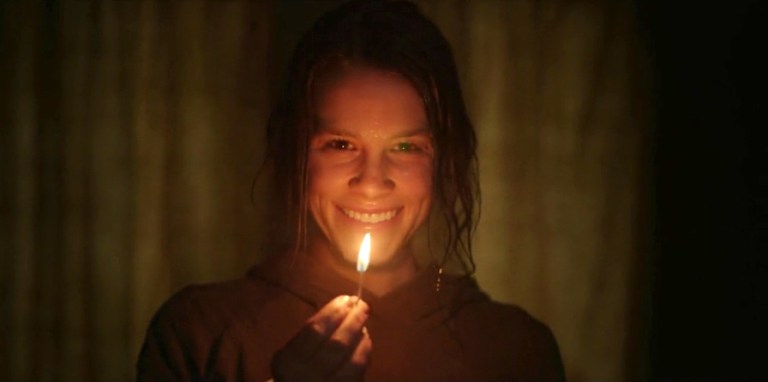
Many aspects contribute to making a horror film unforgettable—the storytelling, themes, pace, acting, scare tactics, cinematography. The most impacting factor has to be an ending that lingers with the viewer long after the movie has cut to black. There’s something to be said about an eerie conclusion with the power to seep under your skin and leave you feeling uncomfortably unsettled. A well-executed ending can haunt you forever. It takes a special talent to create a closing so disturbing that we can’t recall without shuddering. Many have tried, but not everyone executes it just right.
The movies on this list are made by filmmakers who weren’t afraid to go dark. Read below to discover horror’s most unnerving endings (beware of major spoilers ahead).
Night of the Living Dead (1968)

George A. Romero’s zombie masterpiece, profoundly political in nature, follows a group of strangers besieged in a farmhouse in rural Pennsylvania during a zombie apocalypse, as they try to fend off the flesh-eating ghouls.
After a harrowing night, Ben (Duane Jones) is the only survivor. He emerges from the cellar he was forced to seek refuge in into the light of day, only to be shot by an armed mob of trigger-happy white men. Those same men then drag his lifeless body with meat hooks and throw it into a pile of burning ghouls. This encroaching police force killed him without a word of communication or warning, as he carried a gun and bore no resemblance to the undead. Romero reportedly cast Jones as the lead exclusively for his talent, not to make a point about race, but the message is undeniable. Those who were supposed to come to his aid never viewed Ben, a Black man, as human. Ben’s death is one of cinema’s most gutting because it reflects an all too real epidemic evil that still grips America.
Picnic at Hanging Rock (1975)
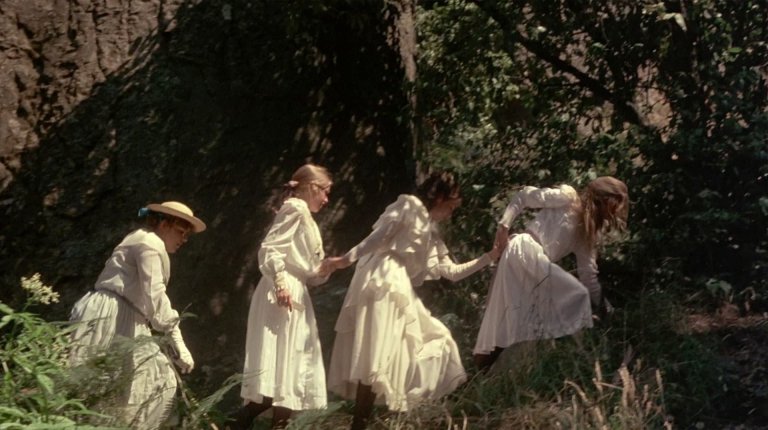
Peter Weir’s atmospheric masterpiece revolves around an all-girls boarding school in the Australian wilderness in 1900, a la dark academia. During a St. Valentine’s outing near the scenic and ancient Hanging Rock, a few girls venture off to explore the geological formation, and mysteriously vanish along with a teacher.
There are no words to describe the fever dream that is Picnic at Hanging Rock. It’s an experience that never leaves you. The film’s eeriest aspect is its ending that declines any resolution. After enduring all the cruelty and abuse at the hands of the headmistress, it’s left unclear whether Sara (Margaret Nelson) was driven to suicide or murdered by Mrs. Appleyard (Rachel Roberts), whose death is revealed in a voiceover and also left ambiguous. The schoolgirls’ disappearance is never solved. We only get a final shot of an echoed image of Miranda (Anne-Louise Lambert) waving and turning away from the camera towards Hanging Rock, refusing to give us any answers. The unsolved mystery lingers with the viewer, the questions forever embedded in our brain, forcing us to form our own sinister answers, even years after.
The Blair Witch Project (1999)

The revolutionary found footage horror follows three film students as they travel to Burkittsville, Maryland to shoot a documentary about a local legend, the Blair Witch. After conducting multiple interviews with locals in town, they venture deep into the Black Hills forest she’s said to haunt, where they become lost and are tormented by a supernatural presence.
Josh (Joshua Leonard) vanishes one morning. Come nighttime, his screams lead Heather (Heather Donahue) and Mike (Michael C. Williams) to an abandoned, crumbling house in the woods. There, they find strange symbols and children’s bloody handprints. Mike’s knocked out by someone (or something) off-camera in the basement. The movie then switches to Heather’s camera, and we see a motionless Mike standing in the corner of the room and facing the wall, just like Parr forced his child victims do when killing them off in pairs. As Heather gets closer, she’s attacked by an unseen force, and the camera falls to the ground, abruptly ending the film, and sparking numerous fan theories. The truth is forever lost in those woods with Heather, Mike, and Josh.
The Mist (2007)
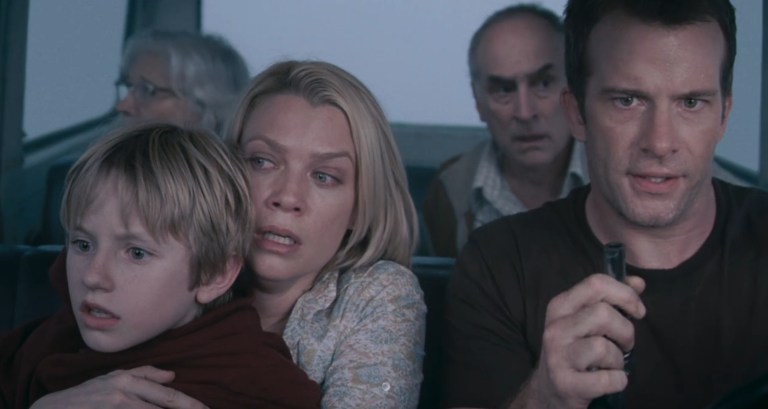
Frank Darabont’s adaptation of Stephen King’s novella begins with a heavy storm having fallen over a small Maine town. David Drayton (Thomas Jane) travels into town with his eight-year-old son Billy (Nathan Gamble) to get supplies at the local supermarket. Shoppers quickly find themselves trapped when a mysterious, thick mist containing deadly creatures rolls in. The situation gets worse when a religious zealot gains followers and begins calling for sacrifices.
The film’s bleak ending differs significantly from the novella’s, bringing to life an unbearably heartbreaking conclusion. In the final act, David and a few others manage to escape the grocery store and drive off into the mist, only to run out of gas as they come across a huge monster. With no bullet left for himself, David mercy-kills everyone in the car, including his son. In a cruel twist of fate, the mist clears and the military arrives to rescue survivors. As a viewer, you’re left collapsing in despair alongside David.
Lake Mungo (2008)

This Australian mockumentary tells the tragic story of 16-year-old Alice Palmer (Talia Zuker). From early on, we learn Alice drowned at a dam in the small town of Ararat during a family trip. After capturing her ghost on camera, her grieving family searches for answers and discovers her secretive life.
It turns out, her brother, Matthew (Martin Sharpe), faked her ghost in the footage. Thanks to Alice’s boyfriend, the family discovers she buried something at the titular lake during a school trip. They unearth her phone, which contains a disturbing video of Alice coming across her own bloated corpse. Despite a lack of an explanation to the encounter, her family finds peace and closure, believing Alice’s soul to have opened up how she needed. As they move out of their home for a fresh start, Alice’s sorrowful specter can be seen in the window watching them leave. During the credits, she’s shown in the images that were taken—easily missed in tiny corners and odd angles. Alice was there the entire time. She remains utterly isolated and unseen in death, as she was in life. Her family’s able to move on, but she’s left behind battling her darkness and trauma alone, still in need of being understood. Despite all the revelations, her family still doesn’t know who she truly was, and neither does the audience, who also missed her.
Goodnight Mommy (2014)

The Austrian film Goodnight Mommy tells a slow-burn, unsettling story about twin boys, Lukas (Lukas Schwarz) and Elias (Elias Schwarz), who doubt that the bandaged woman with a bizarre demeanor who has returned home from the hospital after cosmetic surgery is their mother (Susanne Wuest). They take drastic measures to uncover the truth.
The twins’ innocuous acts of rebellion spiral into relentless acts of violence and torture. As the twists unravel, we learn that she is in fact their real mother. In one of the most emotionally devastating moments in the genre, it’s revealed that Lukas died prior to the events of the film. Elias, consumed with guilt over his death, imagined him all along. Still unable to process his grief, a dark hallucination of Lukas encourages Elias to light the house on fire with the woman “trying to tear them apart” still inside. Flames engulf the house to the tune of Elias humming a goodnight lullaby. The last shot we see is the mother happily reuniting with her sons in a cornfield near the home, Elias’ fate left ambiguous. It cuts to embers dancing in the night, the only remains of a family demolished by loss.
Saint Maud (2019)
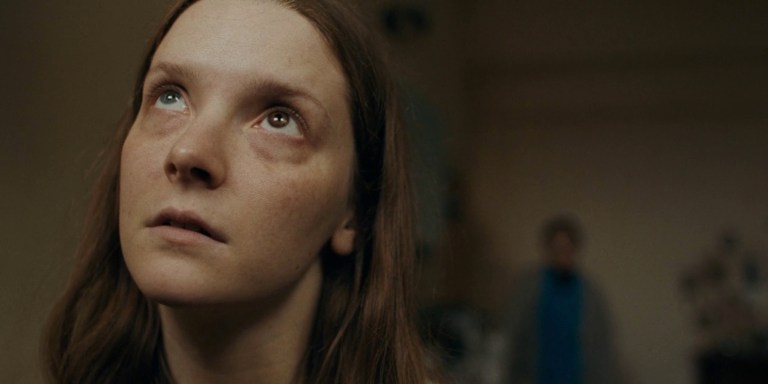
Rose Glass established herself as one of the greatest with her feature directorial debut Saint Maud, a profound exploration of how isolation can impact a troubled mind. Morfydd Clark gives a raw performance as weird girl Maud, an outpatient hospice nurse with a dark past, who left her job at a hospital after the death of a patient and converted to Catholicism. Now a devout Christian, she becomes fixated on saving the soul of her terminally ill patient, Amanda (Jennifer Ehle). Her faith spirals into an obsessive religious fervor with bone-chilling consequences.
Throughout the movie, there’s a question of whether Rose’s battle is with her faith or her mind. During her “final test,” she visits a near-death Amanda, who tells her there’s no God and transforms into a demon. Maud brutally stabs her to death. The next morning, she wanders onto a beach and self-immolates. Initially, she glows as an angel, with bystanders dropping to their knees before her glory. Then the film cuts into an unforgettable, stomach-churning shot of Maud burning in agony.
The Lodge (2019)
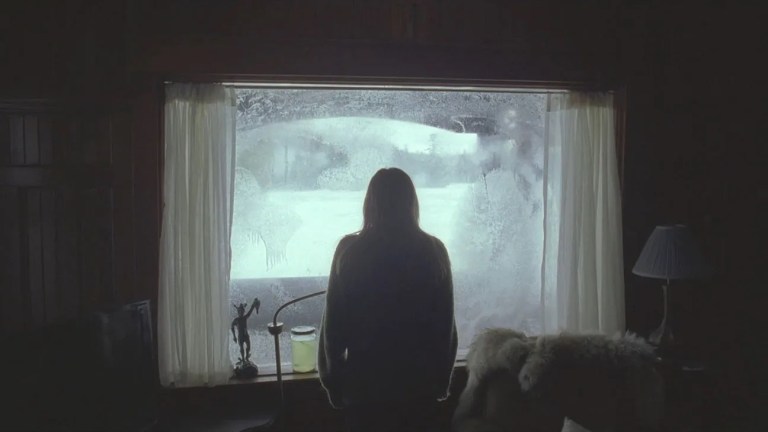
Since Stanley Kubrick’s The Shining, there hasn’t been a movie about isolation as feverish and atmospheric, until The Lodge. The winter horror movie is a bleak, punishing experience whose psychological terror rivals that of Hereditary. Grace (Riley Keough), the sole survivor of a religious death cult, spends the holidays with her fiance, Richard (Richard Armitage), and his children, Aiden (Jaeden Martell) and Mia (Lia McHugh), in a remote cabin. When he’s called back into the city, she’s left alone with her soon-to-be stepchildren, who blame her for their mother’s suicide. Stranded in a snowstorm, they wake up one morning to every belonging and necessity inexplicably vanished, and begin experiencing unnerving events.
The Lodge doesn’t give away its answers easily, bringing a host of theories to the table. It’s revealed that the kids were gaslighting Grace into believing they were in purgatory the whole time, using her trauma against her. By the time they realize the extremes they took it to by hiding her meds, it’s too late. Grace has unraveled into psychosis. Believing that they need to prove themselves to get into heaven, Grace shoots Richard upon his return. In the final scene, Grace and the kids sit at the dinner table with Richard’s corpse. They have duct tape with the written word “SIN” over their mouths, just like the members in her father’s cult. A loaded gun waits on the table.
Smile (2022)

Parker Finn’s feature directorial debut is an incredibly terrifying, thought-provoking exploration of trauma. After witnessing one of her patients die by suicide, Dr. Rose Cutter (Sosie Bacon), a young psychiatrist with a dark past, is haunted by a malicious entity who creepily smiles and can take on the form of anyone. Her ex, Joel (Kyle Gallner), helps her uncover that the entity infects sufferers via witnessing the previous victim’s death. It feeds on trauma, tormenting its victims until it forces them to gruesomely take their own life in front of another, with a smile on their face, no less.
Smile had a tragic conclusion that shocked audiences to their core. After seemingly confronting her demons and overcoming the entity, the heroine met a brutal demise. Her old love was left alive, but cursed, and presumably doomed after watching her self-immolate. The Smile Demon, who serves as a metaphor for trauma and its all-consuming nature, won in the end. The final scene shows Joel, heartbroken and terror-stricken. The camera zooms in on his face, focusing on one of his eyes, which reflects Rose’s fiery death.
Talk to Me (2022)
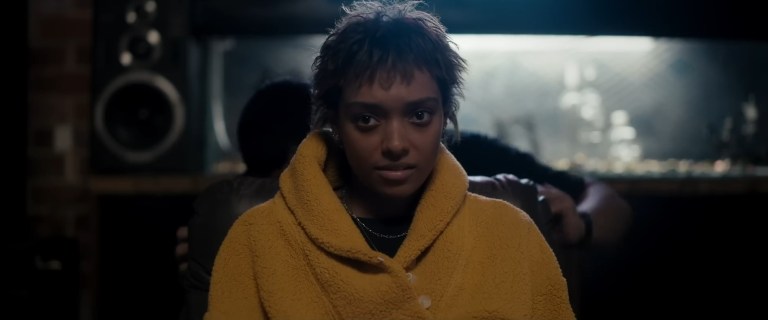
Danny and Michael Philippou offer a unique spin on possession with their feature directorial debut where grief drives the story. At a party she attends with her best friend Jade (Alexandra Jensen) and Jade’s little brother Riley (Joe Bird), 17-year-old Mia (Sophie Wilde) gets caught up in a game involving the embalmed hand of a medium that enables players to communicate with and be possessed by spirits. Believing to be speaking to her dead mother, Mia breaks the rules, inviting evil into their lives.
With Riley’ tortured soul trapped in limbo, Mia’s fooled by the malicious entity pretending to be her mom into killing Riley to save him. She deliberates just as she’s about to push him into oncoming traffic. As Jade rushes to them, the movie cuts to the backseat of a car, where a body slams into the windshield. An overhead shot shows Mia lying on the road. She gets up and teleports to the hospital, where she sees her dad and Riley heal. No one can see or hear her, her reflection also missing from the mirror. Suddenly, she’s enveloped in darkness, and a match is ignited. A pinprick of light draws her to the other side of the embalmed hand, where she hears the ominous words, “Talk to me.” Having died with a spirit attached to her, Mia’s condemned to a dark afterlife as another lost spirit confined to the hand.
Further reading:
